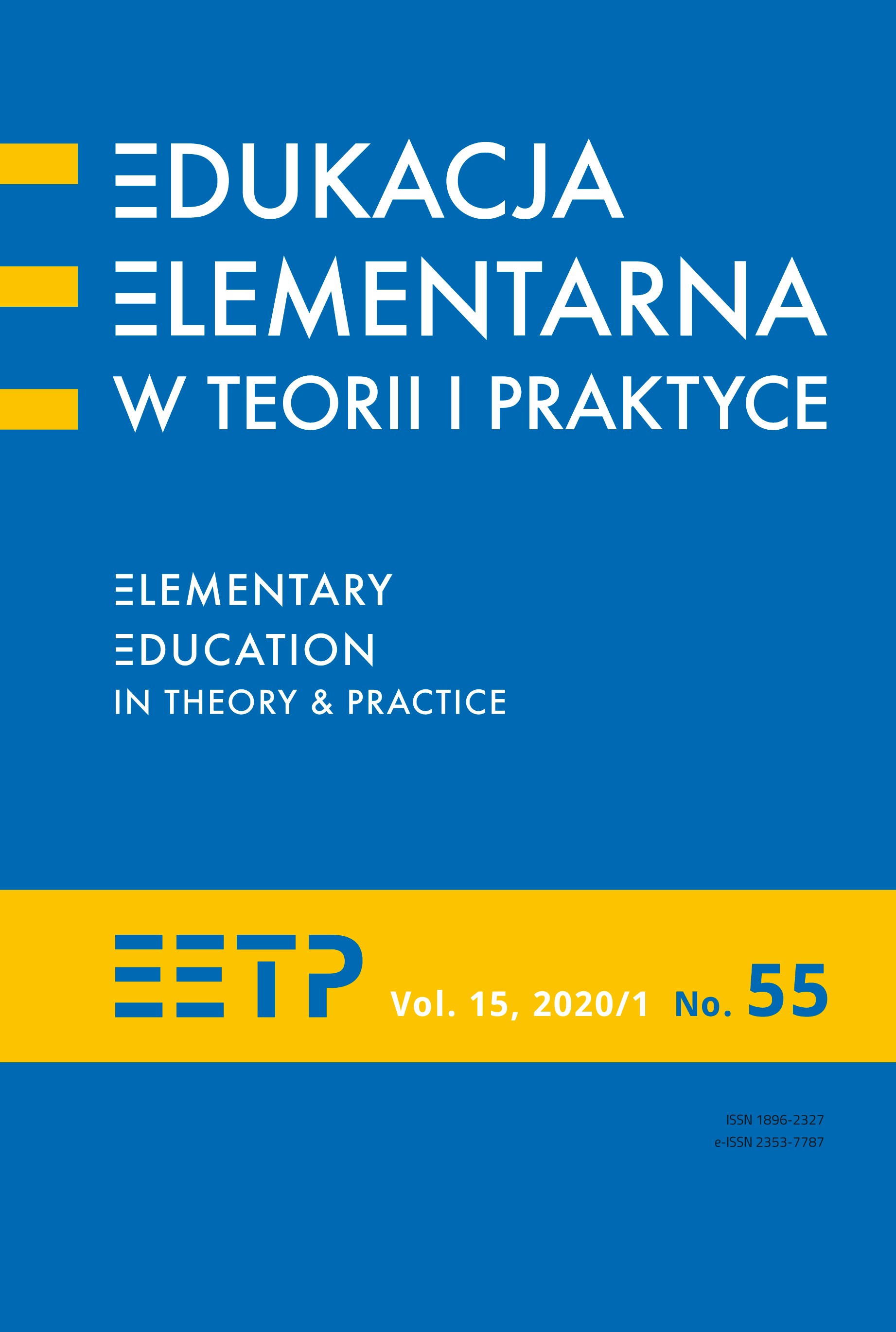Teaching for Our Times. New Technologies in Teaching Foreign Languages in Early School Education
Abstract
The aim of this paper is to present some ideas based on new technologies in order to teach foreign languages more efficiently in early school education. The ideas are derived from the reports and literature of the subject; on the basis of which I have presented a set of applications and websites dedicated to this age group. Taking into account the core curriculum and children’s developmental abilities; I have described example activities with the proper tools. The role of the article should be informative and educational for the teachers who are in charge of lesson planning taking into consideration the contemporary technological facilities. The changes taking place in Polish schools allow us to use new methods in everyday teaching to support children’s interest and attention. Schools should be the pioneers in discovering new possibilities of modern technologies to follow the guidelines of the core curriculum and enliven its content in the contact with students. This way; Polish students shall be able to develop communicative competencies which are crucial in the new; digital world. Being a digital immigrant and native is a fact which; as the new generation of teachers; we can use to make teaching more conscious of civilization improvements.
References
Adjust (2014). Back to School. Apps for Primary School Children and Younger.
Bougsiaa H.; Kopcewicz L. (2016). Dzieci w kulturze mobilnej. Partycypacja; uczenie się i emancypacja pokolenia „cyfrowych tubylców”; [w:] H. Bougsiaa; M. Cackowska; L. Kopcewicz; T. Nowicki; Smartfon i tablet w dziecięcych rękach; Gdańsk: Wydawnictwo Naukowe Katedra.
Chau C.L. (2014). Positive Technological Development for Young Children in the Context of Children’s Mobile Apps; Tufts University. https://ase.tufts.edu/DevTech/resources/Theses/CChau_2014.pdf [dostęp: 24.02.2020].
Chudak S. (2003). World Wide Web jako źródło interaktywnych ćwiczeń w nauce języka niemieckiego; „Języki Obce w Szkole”; nr 5; s. 54-63.
Gajek E. (2013). Technologie mobilne w edukacji językowej – na przykładzie języka angielskiego; „Mazowiecki Kwartalnik Edukacyjny”; nr 4(31); s. 27-33.
Hofman A. (2009). Interdyscyplinarne nauczanie języka angielskiego z zastosowaniem technologii informacyjnej; Gdańsk: Wydawnictwo Uniwersytetu Gdańskiego.
Hutner G.; Hauser U. (2014). Wszystkie dzieci są zdolne; Słupsk: Wydawnictwo Dobra Literatura.
Komorowska H. (2015). Metodyka nauczania języków obcych; Warszawa: Fraszka Edukacyjna.
Makaruk K.; Wójcik S. (2015). Aplikacje mobilne dla dzieci w wieku 3-6 lat. Diagnoza potrzeb i możliwości wsparcia dla rodziców; „Dziecko Krzywdzone. Teoria; Badania; Praktyka”; nr 14(3); s. 53-73.
Murawska B. (2014). Edukacja wczesnoszkolna. Niezbędnik Dobrego Nauczyciela; Warszawa: Instytut Badań Edukacyjnych.
Nowicka M. (2018); E-podręcznik jako multimedialny środek dydaktyczny w świetle wypowiedzi studentek wczesnej edukacji; [w:] M. Nowicka; J. Dziekońska (red.); Cyfrowy tubylec w szkole. Diagnozy i otwarcia. Tom I: Współczesny uczeń a dydaktyka 2.0.; Toruń: Wydawnictwo Adam Marszałek.
Plebańska M. (2017). Polska szkoła w dobie cyfryzacji. Diagnoza 2017. https://www.cyfrowobezpieczni.pl/uploads/filemanager/raporty/RAPORT_CYFRYZCJA_SZKOL_2017.pdf (dostęp: 24.02.2020).
Pyżalski J.; Zdrodowska A.; Tomczyk Ł.; Abramczuk K. (2019). Polskie badanie EU Kids Online 2018. Najważniejsze wyniki i wnioski; Poznań: Wydawnictwo Naukowe UAM.
Podstawa programowa wychowania przedszkolnego i kształcenia ogólnego dla szkoły podstawowej z komentarzem (2017). Warszawa: Ośrodek Rozwoju Edukacji.
Prensky M. (2001). Digital Natives; Digital Immigrants. Part 1. „On the Horizon”; nr 9 (5); s. 1-6. DOI: 10.1108/10748120110424816.
Sarnat-Ciastko A. (2018). Szkoła dla dziecka – cyfrowego tubylca. Postrzeganie szkoły przez uczniów edukacji wczesnoszkolnej – uczestników projektu „Wychować człowieka mądrego”. „Problemy Wczesnej Edukacji”; nr 2(41); s. 108-116. DOI: 10.26881/pwe.2018.41.11.
Tanaś M.; Kamieniecki W.; Bochenek M.; Wrońska A.; Lange R.; Fila M.; Loba B. (2017). Nastolatki 3.0. Wyniki ogólnopolskiego badania nastolatków w szkołach; Warszawa: NASK.
Copyright (c) 2020 Elementary Education in Theory and Practice

This work is licensed under a Creative Commons Attribution-NoDerivatives 4.0 International License.
- When submitting a text, the author declares that he/she is the Author of the article (hereinafter referred to as the “Work”) and:
- he/she owns the exclusive and unlimited copyright to the Work,
- is entitled to dispose of the copyright to the Work.
Declares that it does not infringe any third party copyrights or legal rights.
Declares that there is no conflict of interest.
2. At the same time, the Author grants the Ignatianum University in Cracowa royalty-free, non-exclusive and territorially unlimited licence to use the Work in the following fields of exploitation:
- recording the Work in a hard copy, as well as on a digital or magnetic medium;
- reproduction of the Work using any technique, without limitation of the number of editions or copies;
- distribution of the Work and its copies on any medium, including marketing, sale, lending, and rental;
- introduction of the Work into a computer memory;
- disseminating the Work in information networks, including in the Internet;
- public performance, exhibition, display, reproduction, broadcasting and re-broadcasting, as well as making the Work available to the public in such a way that everyone can have access to it at a time and place of their own choosing;
- within the scope of dependent rights to the Work, including in particular the right to make necessary changes to the Work resulting from editorial and methodical development, as well as to translate the Work into foreign languages;
The licence is granted from the moment of the transfer of the Work to the Ignatianum University in Cracow. The Ignatianum University in Cracow is entitled to grant further sub-licences to the Work within the scope of the right granted. The licence is time-limited and it is granted for a period of 15 years, starting from the date of its granting.
Authors are permitted and encouraged to publish their text online (e.g. in their institution’s repository or on the institution’s website) before or during the submission process as this may lead to beneficial exchanges, as well as earlier and greater citation of the published text (See The Effect of Open Access). We recommend using any of the following portals of research associations:
- ResearchGate
- SSRN
- Academia.edu
- Selected Works
- Academic Search




